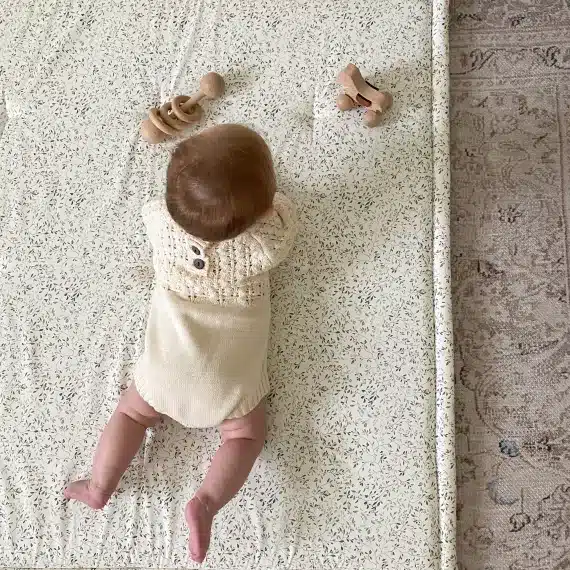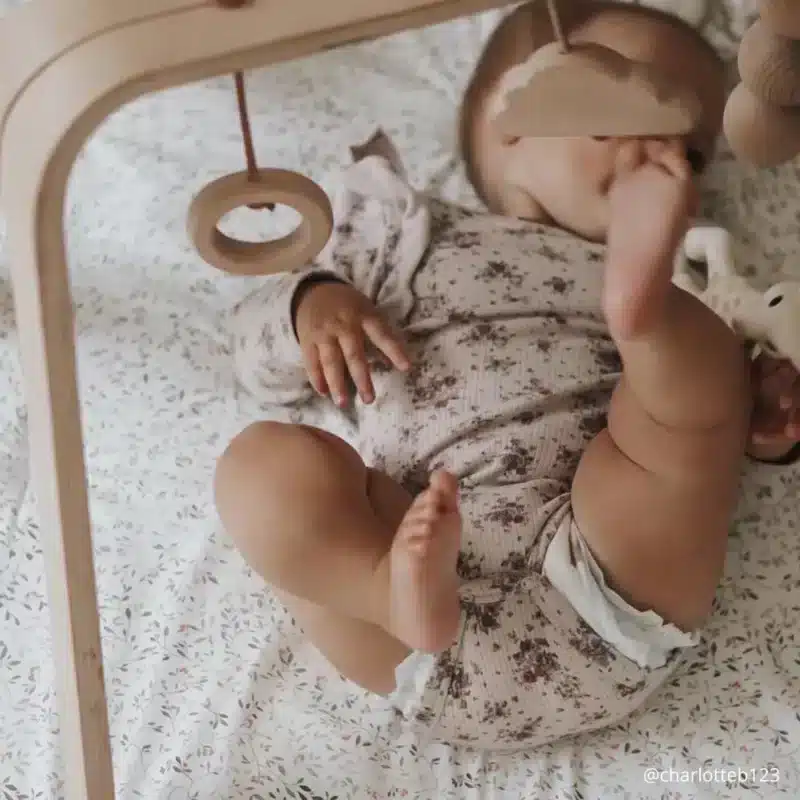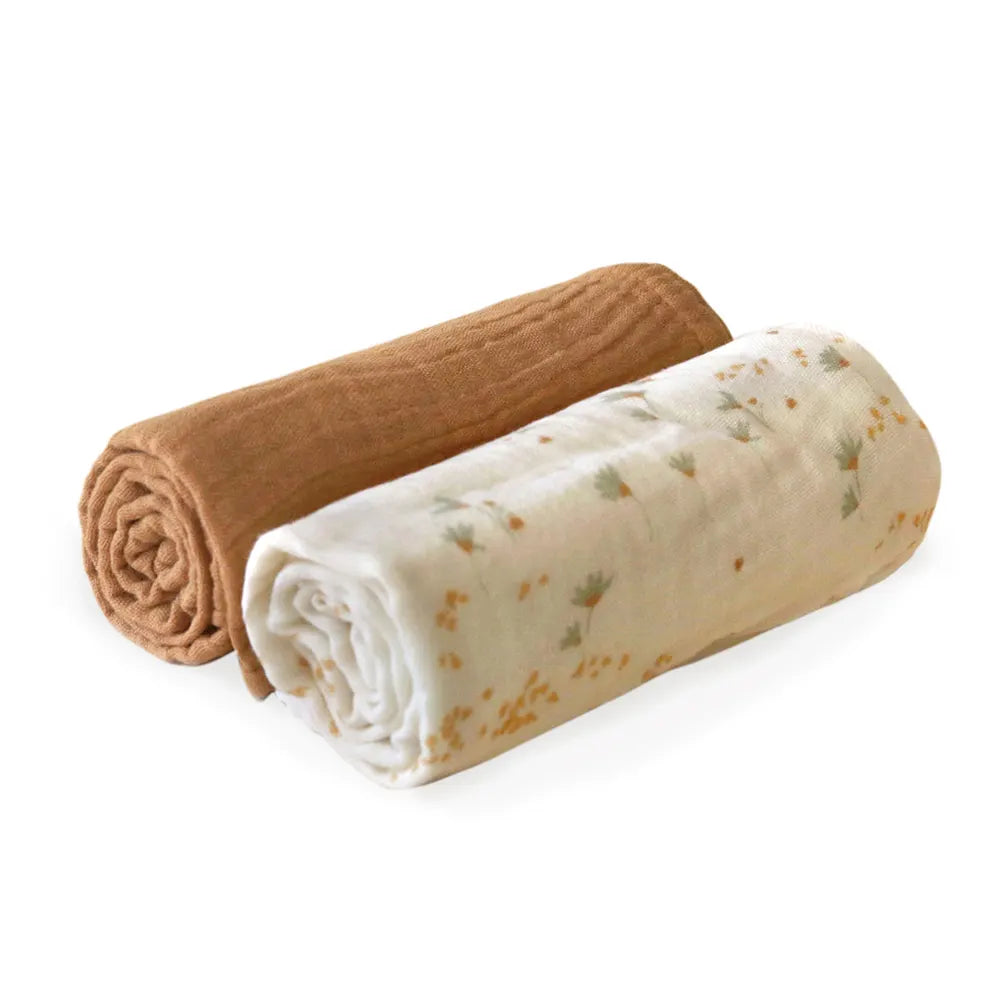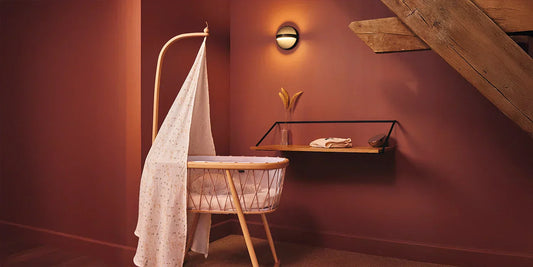Baby massage: benefits, when and how?

Relaxation, better digestion, parent-child connection, improved sleep... Baby massage has many merits. So when and how to do it? What should you avoid? Charlie Crane explains it all to you. Namasté!
What are the benefits of a baby massage?
There are a lot of them! Here is the list:
- Helps to develop parent-child attachment relationships thanks to the proximity and complicity of the moment.
- Encourages non-verbal communication: massage requires you to listen to your baby to know if the movements made please him or not.
- Relaxation: it is a real moment of relaxation for the baby but also for the parent.
- Better sleep and wake up thanks to the secretion of melatonin, the sleep hormone.
- Helps to reduce the stress that the baby may be experiencing.
- Improves digestion, relieves colic and gas.
- Stimulates and improves blood circulation.
Under what conditions?
Choose a spacious and comfortable place for both of you: NOGA changing table, parental bed, mattress, TAMI play mat... The idea is to create a cocoon in which you will be ready to enjoy the moment. Remember to take off your rings and bracelets that could harm your baby.


How long should the massage last?
Count about twenty minutes, with 3/4 reps per movement. Note that this is only an indication. The massage is adapted to your baby's reactions. Sometimes your massage will only last 5 minutes!
As you can see, massaging your baby has many benefits both physically and emotionally. Above all, take your time and adapt to your child, it should be a fun time for both of you.
At what age can I start massaging my baby?
You can start massaging in the first few days, testing movements little by little. The benefit of starting early is to create a ritual that your child will enjoy even as they grow up: by the time they reach around 10 months of age, babies are more awake and generally less focused. Note that massages become a bit more complicated when your baby knows how to roll over!

What type of oil should I use?
Prefer organic, virgin, cold-pressed and fragrance-free edible vegetable oils ideally. Rapeseed oil is particularly suitable for baby skin. You can mix it with sunflower oil and flaxseed oil, which contains a lot of Omega 3.
Avoid oleaginous oils (sweet almond, shea, olive...) because they may be allergenic for the skin of a young child. If you only have this type of oil on hand, there is no formal prohibition but check that the composition is 100% oil.
Don't skimp on the amount of oil to make the massage more enjoyable.
When to do the massage?
Make sure your child is willing to receive a massage: he will be less receptive as he approaches the meal if he is hungry, just after digesting, or if he wants to sleep.
Do not hesitate to stop and start again later if you see that he is not receptive!
The massage is offered and stops on request. Test at different times to see which one he welcomes best.
What movements should you do?
First of all, the rhythm of the massage will be timed by the child's reaction.
You can start with the feet to test your baby's tolerance.
Try to always keep in touch with and observe his behavior to see if the movements are pleasant to him (astonishment, surprise...).
Use both hands to make large circular movements from groin to toes to release the joint. You can alternate with rotational movements.
Use both of your thumbs to exert a small amount of pressure under the arch of the foot and between the toes.
Go up to the pelvis and do small rotations before going up to the abdominal area. Massage the tummy in a clockwise direction and gently press with the palm of your hand as the baby breathes.
These movements help relieve gas, colic... Almost immediate effect guaranteed!
Turn your baby around by resting his tummy on your forearm and perform back and forth movements. Be careful, younger babies may not accept this position: if this is the case, do not insist and try again later.
For the upper body, mimic the same movements as for the lower body by stretching and rotating your arms. Stimulate the palm of your hand with your thumbs: this area provides a lot of relaxation for the baby.
If you want to massage the face, you can start from the base of the nose between the eyebrows and massage up to the ears. They will enjoy being stimulated under the eyes, from lips to ears and on the chin.
The skull is a sensitive area for babies under one year old, we avoid it!
The Charlie Crane Team








